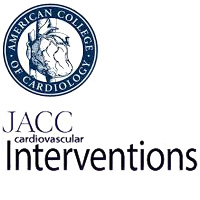Auteurs
Guedeney P, Laredo M, Zeitouni M, Hauguel-Moreau M, Wallet T, Elegamandji B, Alamowitch S, Crozier S, Sabben C, Deltour S, Obadia M, Benyounes N, Collet JP, Rouanet S, Hammoudi N, Silvain J, Montalescot G.
Abstract
Background
Randomized studies have reported low rates of atrial fibrillation (AF) after patent foramen ovale (PFO) closure (<6%) but have relied on patient-reported symptomatic episodes, so the true incidence and timing of AF after PFO closure remain unknown.
Aims
The aim of this study was to prospectively determine the incidence, timing, and determinants of supraventricular arrhythmia following PFO closure on the basis of loop recorder monitoring.
Methods
Cardiac monitoring was proposed to all patients after PFO closure from June 2018 to October 2021 at a single center by means of implantable loop recorder monitoring in patients considered at higher risk for AF (age ≥ 55 years, associated cardiovascular risk factors, prior palpitations, or documented supraventricular ectopic activity) or 4-week external loop recorder monitoring in other patients. The primary endpoint was the incidence of AF, atrial flutter, or supraventricular tachycardia lasting >30 seconds within 28 days of the procedure. Determinants of the primary endpoint were assessed using a stepwise logistic regression model.
Results
A total of 225 patients were included. The primary endpoint occurred in 47 patients (20.9%), including 13 (9.9%) and 24 (28.9%) among patients monitored with external loop recorders and implantable loop recorders, respectively. Overall, the median delay from procedure to arrhythmia was 14.0 days (IQR: 6.5-19.0 days), and one-half of these patients reported symptomatic episodes. Determinants of the primary endpoint were older age (adjusted OR: 1.67 per 10-year increase; 95% CI: 1.18-2.36), device left disc diameter ≥25 mm (adjusted OR: 2.67; 95% CI: 1.19-5.98) and male sex (adjusted OR: 4.78; 95% CI: 1.96-11.66).
Conclusions
Using loop recorder monitoring for ≥28 days, supraventricular arrhythmia was diagnosed in 1 in 5 patients, with a median delay of 14 days, suggesting that this postprocedural event has so far been underestimated.



